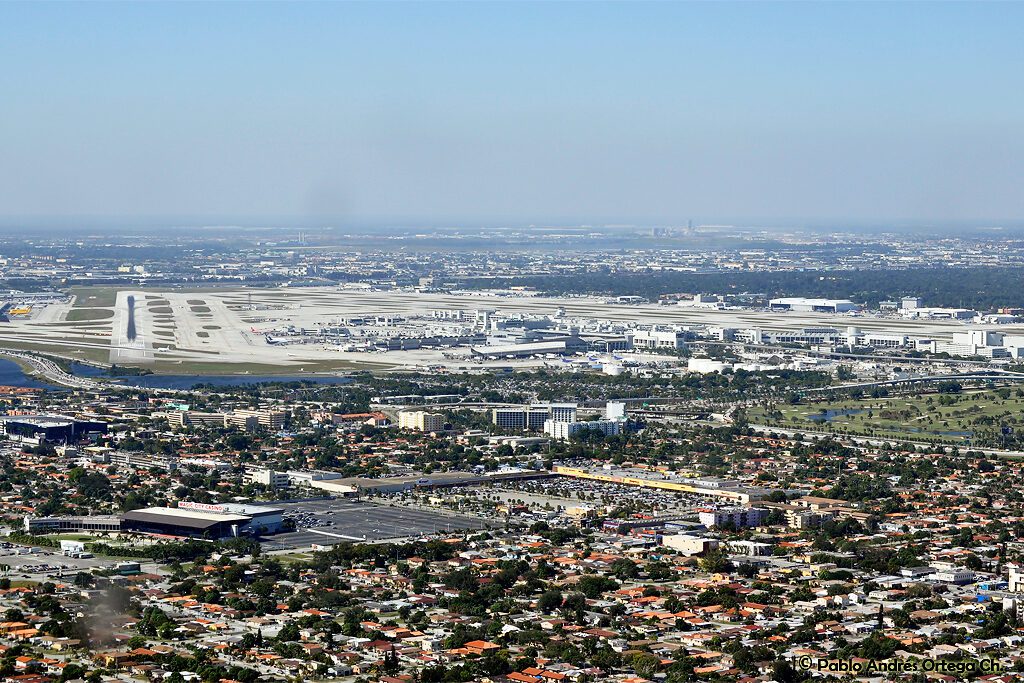Weather, Air Traffic Control Issues Cause Flight Disruptions in Florida and Colorado


Weather and issues related to air traffic control caused disruptions to flights in Florida and Colorado over the holidays. (Photo: Pablo Andrés Ortega Chávez/WikiMedia)
Commercial air travel has seen plenty of disruptions over the past few weeks. High passenger volumes and inclement weather have caused delays and cancellations across the country, and both of these factors played a role in Southwest Airlines’ recent operational meltdown that left hundreds of thousands of travelers stranded across its network. Now, it seems additional turbulence has hit the industry as a result of air traffic control issues and more inclement weather. Monday, Jan. 2, proved to be another challenging day for the aviation industry, as Denver along with cities across Florida have seen even more operational disruptions.
In Florida, this led to an average delay of almost three hours, and busy markets like Miami International Airport and Orlando International Airport were hit hardest. The FAA claimed these disruptions were caused by an issue with the En Route Automation Modernization (ERAM) system at the Miami Air Route Traffic Control Center.
ERAM is the modern computer system implemented in 2015 to replace the FAA’s En Route Host computer and backup system. ERAM has increased the amount of flights that can be tracked by one controller by about 73% and allows controllers to share information between different centers almost seamlessly. This has helped to modernize the air traffic control system through increasing traffic flow and improving conflict and navigation detection. This, combined with its further use of satellites, has created a more modern program to improve the efficiency of the United States’ air traffic control system.
Put simply, as former FAA Administrator Michael Huerta explained it, “You can think of ERAM as a foundational technology, an iPad if you will, and we can build applications on top of it that enable us to provide much more robust capability and functionality for controllers to use.”
Though the modern ERAM program provides many benefits, the issues it experienced in the Miami Control Center led to four flight cancellations and another 80 delays between Miami International Airport and Hollywood-Fort Lauderdale International Airport. However, the FAA reported the problem had been resolved by Monday afternoon.
Meanwhile, across the country, Denver International Airport encountered its own operational disruptions as freezing fog led to mass delays. Additionally, visibility remained under a quarter of a mile, which only worsened the disruptions. As the busiest city for both Southwest Airlines and United Airlines, two of the nation’s busiest carriers, the inclement weather led to 285 delayed flights and 130 cancellations. This is not the first round of widespread delays Denver International Airport has encountered. Last week one of the airport’s largest operators, Southwest Airlines, encountered an operational meltdown that left countless passengers stranded in the Mile High City.
Undoubtedly, demand for travel has made a dramatic comeback throughout last year. In fact, on Monday, January 2nd, 42,000 passenger flights were scheduled across the country. Though the high volume of passengers returning to the sky is assisting the aviation industry in recovering from the pandemic, it’s clear that the industry still faces technological and operational challenges as it heads towards a new normal.
The post Weather, Air Traffic Control Issues Cause Flight Disruptions in Florida and Colorado appeared first on Avionics International.
—————
Boost Internet Speed–
Free Business Hosting–
Free Email Account–
Dropcatch–
Free Secure Email–
Secure Email–
Cheap VOIP Calls–
Free Hosting–
Boost Inflight Wifi–
Premium Domains–
Free Domains





